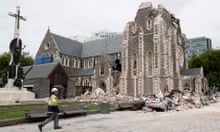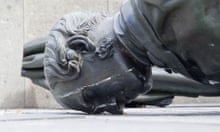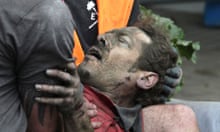The bodies of some victims of the earthquake in Christchurch, New Zealand, may never be recovered from the buildings that collapsed around them, police have said.
Police superintendent Dave Cliff said four more bodies have been pulled from rubble by recovery teams in the shattered city, taking the total death toll to 160.
Many more people remain missing, and Cliff has said the final tally is likely to be around 240.
More than 900 urban disaster specialists are working at sites across the southern city picking through the remains of wrecked buildings and clearing away debris, as the operation moved into its second week.
No one has been pulled alive from the rubble since 26 hours after the quake struck on 22 February, and officials are pessimistic about finding any further survivors.
The operation to recover bodies has been slowed by near constant aftershocks that have rumbled through the city, threatening to bring further debris raining down from damaged buildings.
Authorities have appealed for patience from families waiting for news of missing relatives, saying that the remains of some people who were caught in falling buildings can be identified only through DNA testing or dental records.
"There may be some cases where, because of the enormous forces involved in this, that it may not be possible to retrieve bodies in all cases," Cliff told reporters. "We need to alert people to that possibility."
Among those listed as missing are an unknown number of students and staff from Japan, China and other countries who were at an English-language school located in the Canterbury Television building, one of two office buildings that completely collapsed in the quake. Police said last week that up to 120 bodies were believed to be inside.
Strong winds were hampering rescue and recovery operations on Wednesday, threatening to bring down bricks and masonry from already damaged buildings and spreading clouds of dust around the city.
Some of the city's 350,000 residents donned face masks when they went outside to protect themselves from the dust.
The magnitude 6.3 quake struck on a weekday afternoon within a few kilometres of downtown Christchurch, when the city was bustling with workers, shoppers and tourists. It brought down or badly damaged office towers, churches and thousands of homes across the city.
The prime minister, John Key, said on Tuesday that a commission of inquiry would investigate the circumstances of the quake, including a detailed look at why the CTV building and the the Pyne Gould Guinness building collapsed.
The owners of the CTV building said in a statement issued by their lawyers they would co-operate fully with the inquiry.
Lawyer Ken Jones said the owners had commissioned a detailed structural engineers' report after an earlier quake on 4 September, which found superficial damage to the building but raised no structural issues.




